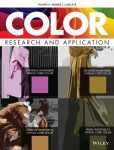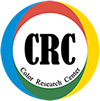 Col Res Appl. 2018 Vol. 43: pp. 349-357
Col Res Appl. 2018 Vol. 43: pp. 349-357
Chanprapha Phuansuwan, Mitsuo Ikeda, Janjira Mepean
abstract
The color appearance of negative afterimages was measured by the elementary color naming method, and the results were compared with those obtained by the two-room technique. Twenty adapting stimuli were presented on a display sequentially. Subjects first assessed the color appearance of the stimuli. After looking at the adapting stimu- lus for 10 seconds, the subjects assessed color of the afterimage. Apparent hue of the afterimage was in general not opponent color to the adapting color. The relation between the adapting stimuli and the afterimages was analyzed by the angle differ- ence Du, when apparent hues are expressed by the angles of the points on the polar diagram of the opponent color theory. The relation relationship of Du to the angle of the adapting color uing was quite similar to the results obtained by the two-room tech- nique, implying that the chromatic adaptation shown by the afterimage also occurs in the brain rather than in the retina.
Keywords
chromatic adaptation, complementary color, elementary color naming, opponent colors theory, two-room
technique
